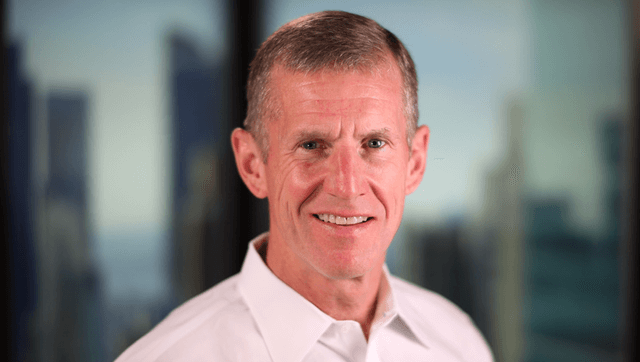McChrystal: Focus on Empowering Frontline Decision-Makers
When confronted with a decentralized foe, General Stanley McChrystal had to shift his focus and operational hierarchies within the Joint Special Operations Command (JSOC). The same principles apply to empowering organizations in a crisis today.
In his keynote address Wednesday morning at GSX+, retired four-star U.S. Army General McChrystal shared the leadership lessons he learned when facing al Qaeda in Iraq while he was in command of the JSOC—an elite group of counterterrorist forces from across the U.S. military.
Unlike previous terrorist organizations, which had a hallmark pyramid-shaped command structure under a single leader, al Qaeda in Iraq operated under a decentralized information-sharing and command structure. There were no midnight meetings between leaders to tightly coordinate operations, but somehow the organization remained informed, coordinated, and able to adapt by leveraging emerging technology.
This required a different response from U.S. counterterrorism forces, especially around how the military shared information and how it made decisions.
The JSOC adopted a model of “radical transparency,” McChrystal says, which democratized information sharing by quickly disseminating information not just up the chain of command but across it to develop a “shared consciousness.” He hosted daily 90-minute remote video briefings that were open to anyone in the command—7,500 people worldwide. The briefings quickly and effectively got frontline forces, as well as commanders, on the same page about operations, intelligence, and challenges.
From there, McChrystal pushed decision-making authority down, so that people who were well-informed and close to the problem had the authority and expectation to make decisions to solve it.
The outcome was that the JSOC became both collectively faster and more precise. In October 2003 when McChrystal took command of the JSOC, forces were conducting four raids per month. By the end of August 2006, forces were conducting 300 raids per month.
McChrystal calls this model “empowered execution,” where decisions are well-informed and pushed lower on the chain of command. Battles are not won by generals, he adds, but by privates and sergeants on the frontlines. If forces wait for information to travel all the way up the chain of command to the person in charge, by the time the decision reaches the frontline force again, the decision could be wrong, outdated, or ill-informed, he says. By empowering those forces to make decisions on their own, they gain momentum and build their own leadership skills.
This model can apply beyond the battlefield because just like generals, CEOs may command from a distance, but it’s the employees on the frontlines that can make or break a business. They are the ones interacting with the public or enabling the organization to compete in its field.
“That’s where the rubber meets the road, and that’s where they need to be most reactive, most adaptable, most focused on the mission at hand,” McChrystal says. “And that means you really need leadership to make this work.”
The previous hierarchical model of command and control is losing effectiveness in a more interconnected, technologically driven, and even remote workforce, he says. These days, it behooves leaders to act less like a general and more like a gardener—cultivating future leaders and helping them grow.
“When we think about leaders creating an organization, what they’re doing is creating an environment or an ecosystem in which the people in the organization—the junior leaders and even the most junior people—can do that which only they can actually do, which is accomplish the mission,” McChrystal says. “It’s a different role for the leader; it’s a little less ego-based… but the reality is it’s the most effective way to build an organization that’s fast and adaptable. It creates leaders that help create more leaders, and leaders that help to create success.”
